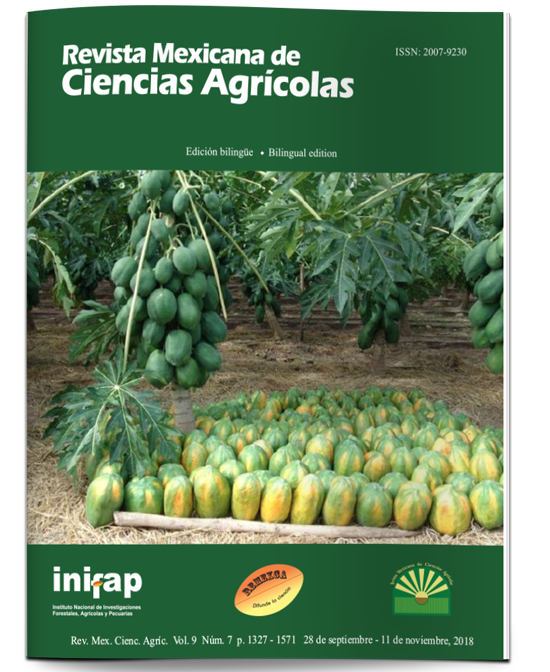Wild plants of the center-north of Mexico with potential for oil production
DOI:
https://doi.org/10.29312/remexca.v9i7.1672Keywords:
vegetable oil, bioenergetics, alternate energies, wild speciesAbstract
Given the fluctuation of prices and the depletion of fossil fuels, as well as their negative effects on the environment, the development and use of biofuels represent a potentially viable alternative. However, the inputs currently used in the production of bioenergy are highly questioned for their energy sustainability. Due to this, the search for alternative sources from plants resistant to adverse climatic factors, high adaptation capacity, low input requirements and not competing with food is a priority. Considering the above, samplings were carried out in north-central Mexico to collect wild species, in order to determine their productive potential, the oil content of the seeds, and analyze the physical and chemical characteristics of the oil. Seeds of 19 plant species were collected. Agave sp., registered the highest seed productive potential with 24 305 kg ha-1; however, it has the limitation of having a long fruiting period and its oil content is low. Five of the collected seed species (Cucurbita ficifolia, Cucurbita foetidissima, Proboscidea louisianica, Jatropha dioica and Apodanthera undulata) reached oil contents greater than 30%. A. undulata could potentially produce up to 1 315 kg ha-1 of oil, which makes it as competitive as commercially available inputs. The physical and chemical characterization of the oils showed a wide variation, which allowed to identify oils with nutritional, bioenergetic and other potential uses.
Downloads
Downloads
Published
How to Cite
Issue
Section
License
The authors who publish in Revista Mexicana de Ciencias Agrícolas accept the following conditions:
In accordance with copyright laws, Revista Mexicana de Ciencias Agrícolas recognizes and respects the authors’ moral right and ownership of property rights which will be transferred to the journal for dissemination in open access. Invariably, all the authors have to sign a letter of transfer of property rights and of originality of the article to Instituto Nacional de Investigaciones Forestales, Agrícolas y Pecuarias (INIFAP) [National Institute of Forestry, Agricultural and Livestock Research]. The author(s) must pay a fee for the reception of articles before proceeding to editorial review.
All the texts published by Revista Mexicana de Ciencias Agrícolas —with no exception— are distributed under a Creative Commons License Attribution-NonCommercial 4.0 International (CC BY-NC 4.0), which allows third parties to use the publication as long as the work’s authorship and its first publication in this journal are mentioned.
The author(s) can enter into independent and additional contractual agreements for the nonexclusive distribution of the version of the article published in Revista Mexicana de Ciencias Agrícolas (for example include it into an institutional repository or publish it in a book) as long as it is clearly and explicitly indicated that the work was published for the first time in Revista Mexicana de Ciencias Agrícolas.
For all the above, the authors shall send the Letter-transfer of Property Rights for the first publication duly filled in and signed by the author(s). This form must be sent as a PDF file to: revista_atm@yahoo.com.mx; cienciasagricola@inifap.gob.mx; remexca2017@gmail.
This work is licensed under a Creative Commons Attribution-Noncommercial 4.0 International license.



